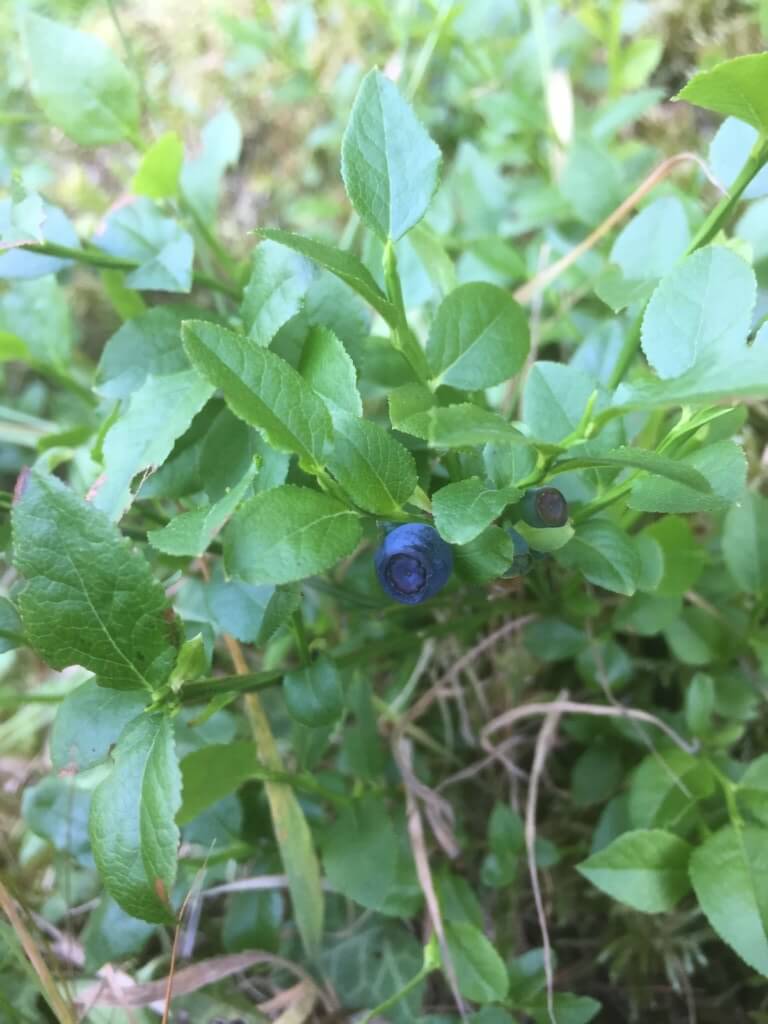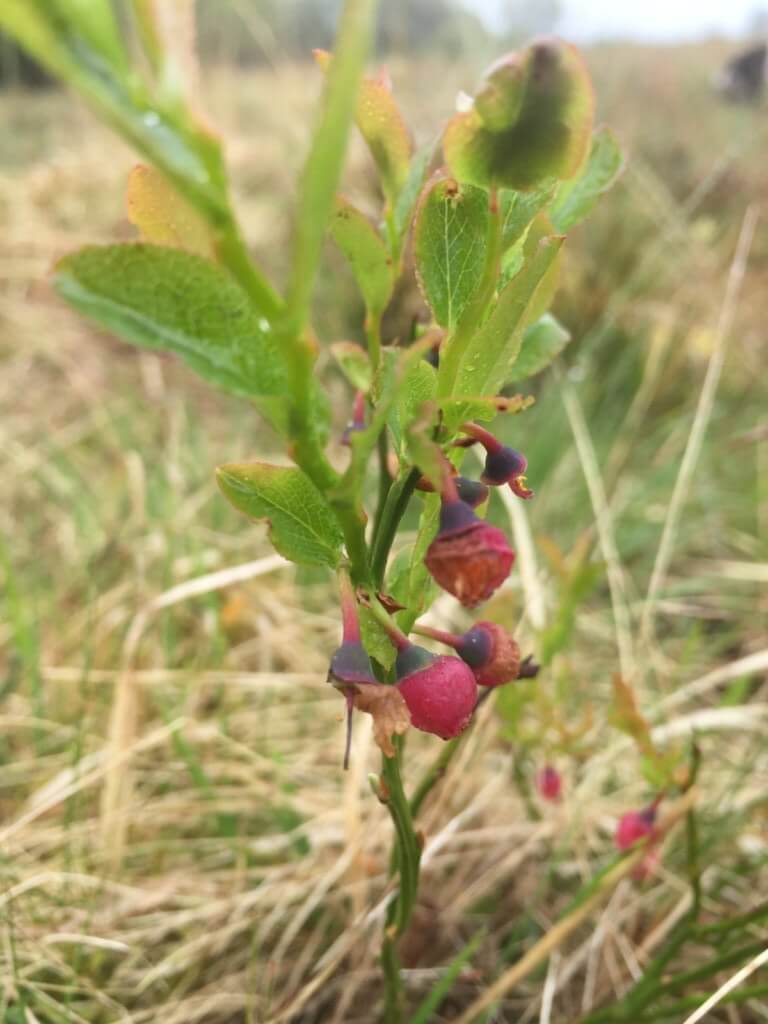
I used to think of the Bilberry (often Blaeberry north of the border) as an upland plant – something available for browsing in high summer when crossing wide expanses of heath or moor. In recent years I’ve found it along local hedge-banks and within deciduous woodland in the dairy and sheep country of the lowlands, as well as up on the higher ground of Exmoor and Dartmoor.
The problem with the lowland plants is the difficulty in finding any of the wretched berries. The plant itself is common enough, sometimes carpeting large areas. And the pinkish, globular flowers are very obvious in the spring, hanging down from their stalks and promising good things to come. And yet, later in the season, ripe berries are few and far between. Perhaps losses to birds and small mammals are greater away from open moorland? Adding to the problem, the dark colour of the ripe berries helps them melt into the background making those that do survive devilishly hard to spot. Small children are a useful search tool with their keen eyesight, willing attitude and proximity to the ground.
The supermarket equivalent of the Bilberry is the well-known and heavily-cultivated Blueberry which is larger, brasher and (it goes without saying) inferior in taste. These berries have gained a reputation as a ‘superfood’ in recent years, full of such apparently good things as antioxidants and phytoflavinoids, and sold on the basis that they can ward off almost all known ailments and diseases. They even have anti-inflammatory properties which may help with the sore back you are sure to develop during the protracted gathering process.

In my neck of the woods bilberry is also important as the food-plant of the charming green hairstreak butterfly. It is also used by a whole host of moth species.
Great article Ian about one of my favourite plants. It was a family tradition to go Bilberry picking on the moors every July, a tradition I have continued with my own children. I think that the general dearth of berries in moorland areas is down to sheep grazing. The fresh green leaf growth and flowers appear in very early spring when the there is little else palatable on the moors. Sheep are like plantation tea-pickers, nipping off the fresh tips, leaving few flowers to develop into berries. In the Peak District it is difficult to find enough berries for a pie on the moorlands, despite many hectares of Bilberry. Yet on the roadside verges fenced off from sheep there are abundant berries year on year. Very close to where I live is an abandoned bank dominated by Bilberry that never gets grazed. Every year there is a bumper crop of berries. Birds pile in every July to gorge on the berries (Wood Pigeons, Blackbirds, Ring Ouzels, Thrushes, Sylvia Warblers etc) with Redwings and Fieldfares tucking in late autumn. yet I usually still see many uneaten berries deep into the winter long after all the Bilberry leaves have fallen.
Here is the bank near to my house that is ungrazed and has abundant Bilberry. This was taken on 10 October just as the Bilberry leaves were changing colour. Take a look at those nearest bushes and they are still burgeoning with berries: https://www.flickr.com/photos/timmelling/22053806668/in/photolist
And here is a berry taken on 21 December in snow at the same site: https://www.flickr.com/photos/timmelling/4228081838/in/photolist
Like Jonathan says, Bilberry is the main larval foodplant for Green Hairstreaks in the north. But the larvae feed on the fresh shoots in May and June, so many must get eaten by sheep. I usually find that Green Hairstreaks are most abundant where the Bilberry is not sheep grazed.
Tim, thanks. Great pics (as always!). I’ve yet to find anything like that density of berries around here but will keep on looking.
What you need to pick them is a standard Swedish berry picker, rather like a dust pan with a comb at the front and boy do they work. Lets hope their football team is less efficient tomorrow!
Love them. Bring back memories of an early cycle touring holiday when my brother and I foraged for them in the Black Forest and brewed them up on our primus stove. In the Cevennes you are not allowed to use the rakes, you have to hand-pick, which is nearly as efficient anyway.